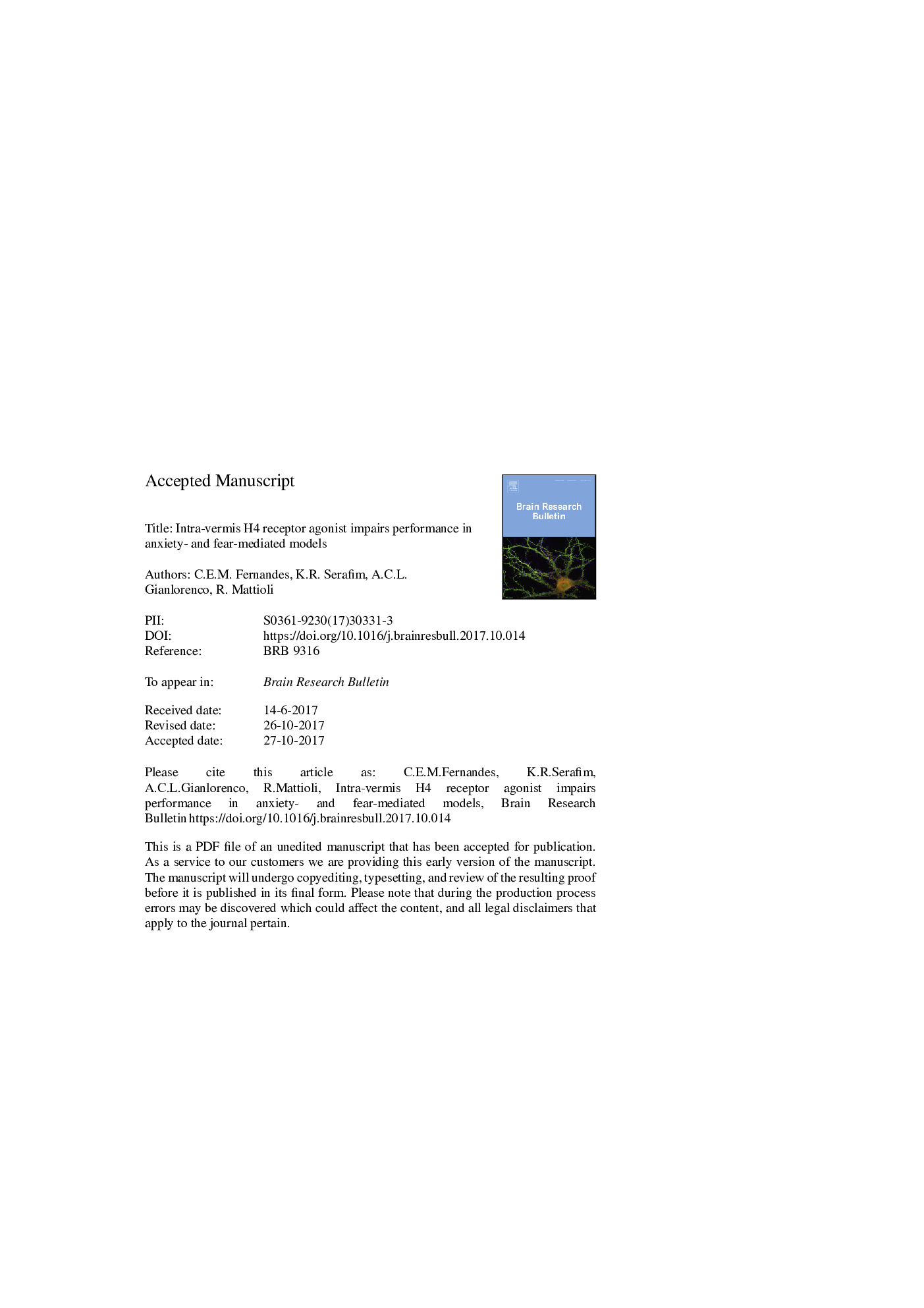| Article ID | Journal | Published Year | Pages | File Type |
|---|---|---|---|---|
| 8839083 | Brain Research Bulletin | 2017 | 26 Pages |
Abstract
The neural histaminergic system modulates cognitive performance in various animal models. However, little is known about the effects of the H4 histaminergic receptor in the central nervous system. The purpose of this study was to investigate the effect of histaminergic H4 agonist VUF-8430 microinjection into the cerebellar vermis on the consolidation of emotional memory in mice subjected to the elevated plus maze (EPM) and inhibitory avoidance task (IAT). All experiments were performed on two consecutive days: exposure (T1 and D1) and 24 h after, which we called re-exposure (T2 and D2). The animals received saline (SAL) or VUF (0.15 nmol; 0.49 nmol; 1.48 nmol/0.1 μl) administered post-exposure. Experiment 1 was conducted in the EPM, and the animals were free to explore the maze for 5 min. In T1, immediately after exposure, the pharmacological treatment was given; in T2, there was only re-exposure to the EPM. Experiment 2 involved the IAT, and the pharmacological treatment was provided post-D1; in D2, the animals were only re-exposed to the IAT. In Experiment 1, increased open arm exploration (% open arm entries and% open arms time) for 0.49 and 1.48 nmol of VUF were recorded in T2 compared to T1. In Experiment 2, a significant decrease in consolidation latency was recorded for the group that received 1.48 nmol of VUF compared to the SAL group in D2. These results indicate that a 1.48 nmol VUF microinjection into the cerebellar vermis impaired performance in both models, even though one model was anxiety-mediated (EPM) and the other was fear-mediated (IAT).
Related Topics
Life Sciences
Neuroscience
Cellular and Molecular Neuroscience
Authors
C.E.M. Fernandes, K.R. Serafim, A.C.L. Gianlorenco, R. Mattioli,
